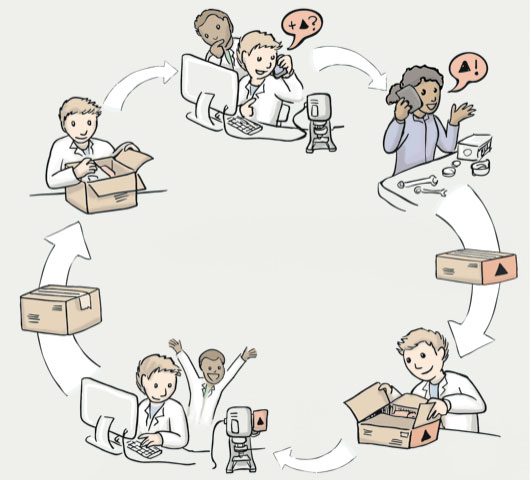The workhorse instruments of modern microscopy are often expensive and so the most common route for access is through imaging facilities serving local research campuses. Nevertheless, life-scientists are increasingly crying out for more advanced solutions able to address next-generation questions. This is particularly apparent in the domain of live imaging of intact organisms, where custom solutions suited to the specific needs of the model in question are required.

Fortunately, the required technologies exist – in the labs of developers. For example, light sheet microscopy is a key example that has emerged as a technology for fast and gentle biological imaging that derives its unique capabilities from its construction around the sample as much as its optically efficient imaging scheme. Support from HFSP was integral to the OpenSPIM (1) open-source light sheet microscope in particular, which opened up light sheet microscopy to non-specialists. However, by its nature and years of service, this introductory offering lags behind the state of the art.
Unfortunately, replicating the more powerful platforms reported often requires technical expertise that is not available within the vast majority of life-science focused labs and institutions. The outward-facing advanced imaging center at HHMI Janelia provides one solution to bridge the gap between capability and access, offering international scientists a broad range of advanced technologies developed in house, alongside the expertise needed to run and maintain such instruments. However, given the unique nature of the center, access is limited to a lucky few.
Additional similar centers will emerge in the years to come. Nevertheless, the findings of studies requiring long-distance travel of animals are open to question given the deleterious effect this may have on their normal functions. Likewise, the application-specificity apparent in developer labs is hard to replicate in a multi-user setting. Clearly the existing models for advanced microscopy access are unable to serve the needs of all biologists and additional complementary models must be sought.
In crafting alternatives, we must be capable of delivering not only advanced, but also application-specific technologies to biologists more widely than their current distribution within a few well-funded institutions. We propose a model based on shareable, traveling and configurable instruments with success predicated on a deeper collaboration between users and developers. Providing instrumentation as a shared resource provides affordability while allowing the microscope to pass from one user to the next thus averting the tail-off in instrument usage as studies are completed. Allowing the microscope to travel between labs ensures that this burden falls on the technology and not on living biological systems stressed by the associated rigors. By employing modularity in the design one allows for reconfiguration of the microscope from one user to the next, allowing application-specificity while averting the rapid obsolescence associated with immutable commercial technologies.
The benefits of such a model are potentially great. Beyond simply expanding access, the use of a common platform could aid reproducibility and allow labs to build on each other’s findings. Developers benefit from invaluable feedback, better aligning their efforts with the needs of biologists and collaborating more effectively than from a single location to maximally leverage the technologies fostered. Challenges are similarly apparent. For example, shrinking often sprawling setups to compact and robust instruments suited to travel places a greater engineering burden on the developer lab than is usual. Likewise, training users, maintaining instruments in the field through service, and financing such initiatives is beyond the typical remit of academic labs. Nevertheless, with the foresight of funding bodies or tech philanthropists these challenges can be overcome to significantly expand advanced, custom microscopy access.


































